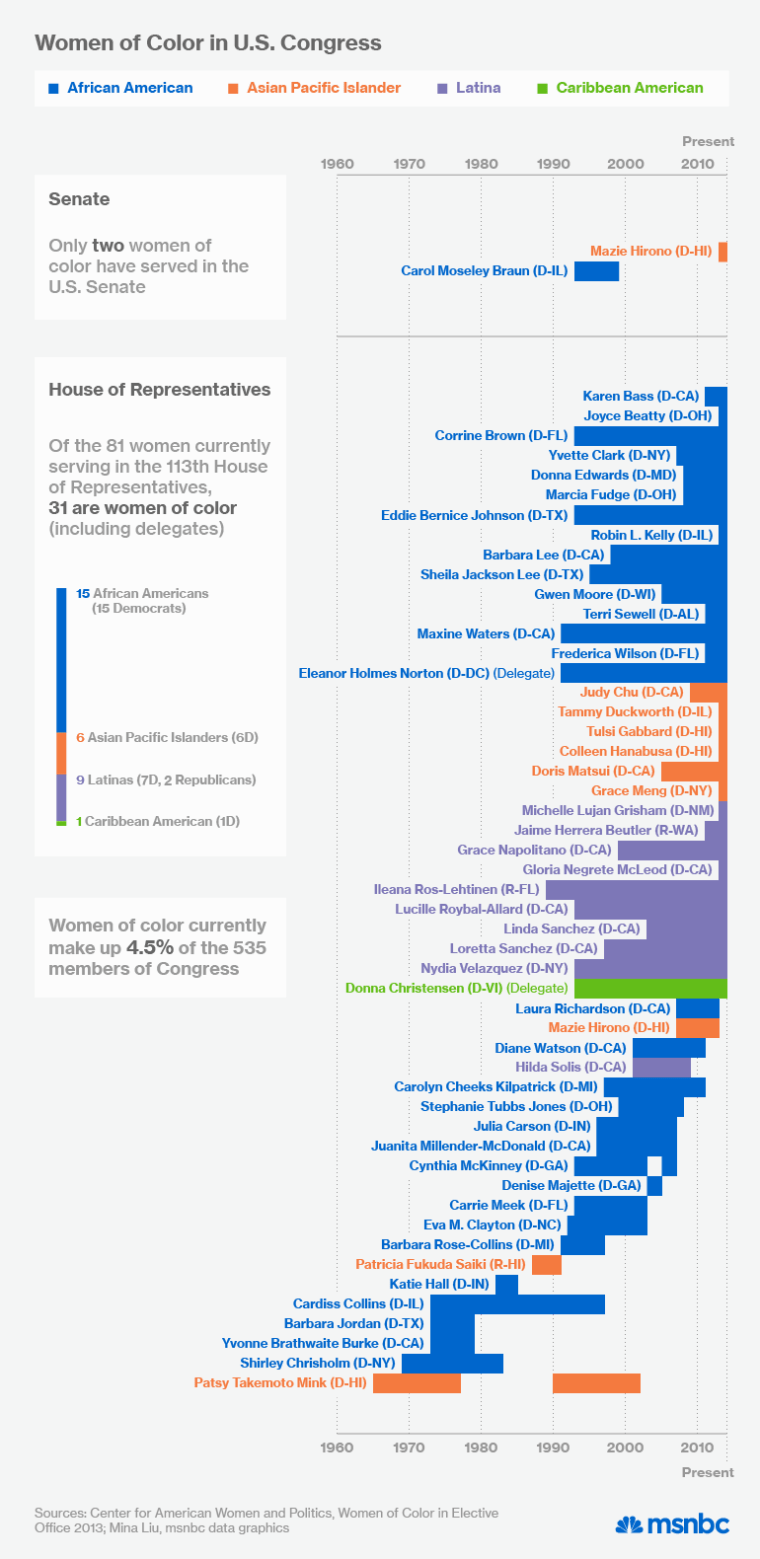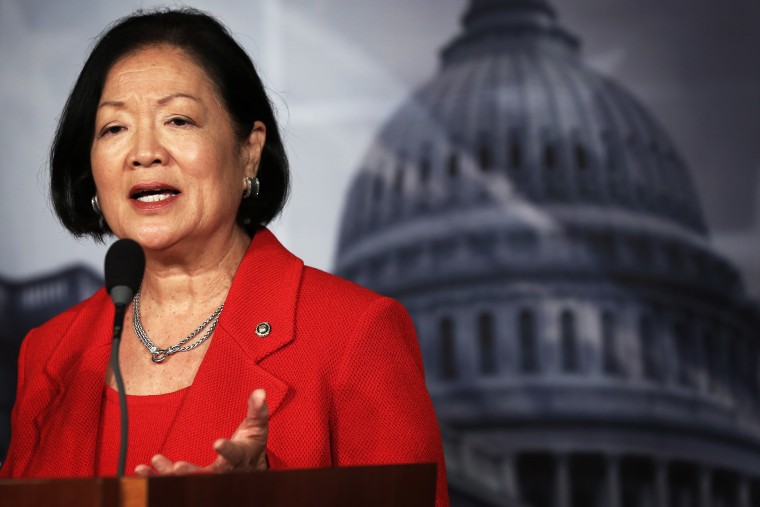The 113th Congress has been applauded for its diversity, but women -- and specifically women of color, who only make up 4.5% of the 535 members -- are still the vast minority.
Although women of color have made recent strides in politics, the fact remains: only two have ever served in the Senate. It was as recent as 2013 that Democrat Mazie Hirono became the first Asian-American woman elected from Hawaii. Hirono comes after Carol Moseley Braun, who was the first and only African-American woman elected to the Senate. She served from 1993 to 1999.
Of the 81 women currently serving in the House, 31 are women of color, including delegates, according to the Center for American Women and Politics. Twenty-nine of those women are Democrats. The 81 are made up of 15 African-Americans, six Asian Pacific Islanders, one Caribbean American, and nine Latinas. However, the Latina representation exists in states like California, Florida, and New Mexico, where they're not wholly considered the minority.
2014 promises to be another "Year of the Woman," with women such as Wendy Davis, Alison Lundergan Grimes, and Michelle Nunn in pivotal races (not to mention stories on probable 2016 candidate Hillary Clinton cropping up every other day). This year has even been positioned as a turning point for women in politics.
But as women are propelled into the political spotlight, it's important to remember the United States still ranks 79th in the world in female representation, and women of color are just a fraction of that.

